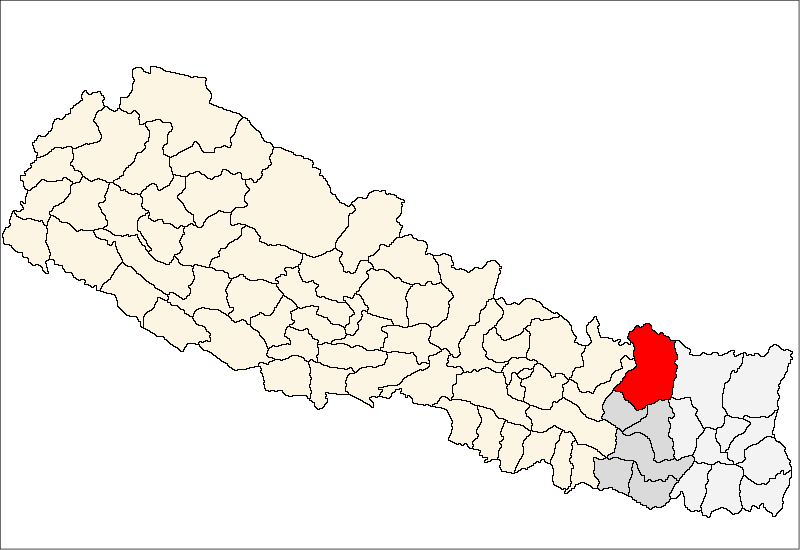
OR
Nepali products reach Japan for the first time via China trade route
Published On: January 29, 2024 03:55 PM NPT By: Dilip Paudel

KATHMANDU, Jan 29: Eight years after signing a transit agreement with China, Nepal has started exporting goods to third countries using Chinese ports. Nepal, which is only dependent on India for international trade with third countries, has started sending goods to third countries using China's land.
According to the Department of Customs (DoC), noodles produced in Nepal were sent to Japan through the Chinese port through the Tatopani border. Director General of DoC, Shovakanta Poudel said that after the bilateral agreement on transit protocol between Nepal and China, Nepali goods have been exported to third countries using the Chinese route for the first time. “The export of goods to third countries has started using China's ports," Poudel said, "This is a big achievement for Nepal in international trade." A transit agreement was signed between Nepal and China in 2072 BS.
Dayanand KC, head of the Tatopani Customs Office, said that Wai Wai Zing Noodles produced by CG Foods Private Limited were sent to Japan via China. According to the Tatopani Customs Office, 2,400 cartons of noodles worth 11,791 US dollars have been exported to Japan.
This has opened the way to export other goods to third countries using Chinese ports. According to KC, some containers of turmeric from Myanmar have been imported to Nepal through Chinese ports this year. "Imports and exports to third countries through China have started," KC said, “Now, our dependence on India for international trade with the third countries will end.”
According to the transit agreement with China, Nepal gets to use four maritime and three dry ports of China. So far Indian ports have been used to export from Nepal to third countries and to import goods to Nepal from third countries. Now four sea ports in China namely Tianjin, Shenzhen, Lianyugang and Zhangjiang can also be used. Anzhao, Lhasa and Shigatse can also be used among China's dry ports.
During the then Prime Minister KP Sharma Oli's visit to China, a transit agreement was signed with China in Chaitra 2072 BS. Four years after the transit agreement, the protocol was signed in 2076 BS, but the port could not be put into use.
The government has been criticized for not getting the facilities despite signing the transit agreement and transport and transit protocol with China. Transit facility means that Nepal has access to sea shores to send goods to third countries through China and to bring goods from third countries. Nepal is a landlocked country.
After the start of import and export through China, Nepal’s dependence on India for foreign trade with third countries will be broken. Nepal is expected to make a leap in the trade sector after getting maritime access through China.
Traders say that it will be easy for Nepal to use China's Guangzhou port. Guangzhou is China's second largest commercial port after Shanghai. In the protocol with China, it is mentioned that trade between Nepal and China can be done through six points.
It has been agreed to use Tatopani, Kerung, Kimathanka, Korala, Yari and Olangchung Gola channels. However, not all of them have been used. Tatopani and Kerung crossings, which are in operation, are also closed intermittently. Olangchung Gola, Kimathanka and Korala crossings have not been formally opened.
In the United Nations Convention on the Law of the Sea issued in 1982, it is mentioned that landlocked countries should also have access to the sea. There is an international recognition that for such access that reaches the sea through the country's land, a transport and transportation agreement should be concluded with the respective country.
You May Like This

Japan’s Odakura, Korea’s Park win Asian Cup Triathlon C’ship
POKHARA, April 28: Japan’s Makoto Odakura has won the first Asian Cup Triathlon Championship held in Pokhara on Saturday. He... Read More...

Minister Pun urges Japan to further invest in Nepal’s hydropower sector
KATHMANDU, Jan 24: Minister for Energy, Water Resources and Irrigation, Barshaman Pun, has urged the Japanese government to increase investment... Read More...

Japan provides eight ambulances to Nepal Red Cross
KATHMANDU, July 5: Japan has provided eight ambulances to Nepal Red Cross Society (NRSC) under its Grant Assistance for Grassroots Human... Read More...






Just In
- Tourists suffer after flight disruption due to adverse weather in Solukhumbu district
- Vote count update: NC maintains lead in Ilam-2
- NAC's plane lands at TIA after its maintenance in Israel
- Indian Ambassador assures of promoting India's investment in Nepal
- Freak accident involving self-made pistol leaves young man injured in Banke
- Global Shapers Community Kathmandu set to host second edition of Global Talk Series
- CNI President Agrawal highlights Nepal's conducive investment climate at Investment Summit
- Hearing on case against cricketer Lamicchane could not proceed today












Leave A Comment